Fire prevention is a function of many fire departments. The goal of fire prevention is to educate the public to take precautions to prevent potentially harmful fires, and be educated about surviving them. It is a proactive method of reducing emergencies and the damage caused by them.
Firewise
Campfires are the nation’s leading cause of children’s camping injuries, and the primary catalyst for damaging forest fires. Campfire building may be safely undertaken if you practice proper burning techniques, safety measures to protect yourself, and forests. The information (below) are helpful tips to follow when camping…
Becoming A Firewise Community
Using a five-step process, communities develop an action plan that guides their residential risk reduction activities, while engaging and encouraging their neighbors to become active participants in building a safer place to live. Neighborhoods throughout the United States are embracing the benefits of becoming a recognized Firewise Community – and you can too!
The following steps will get your community started and on their way to receiving their official Firewise Communities USA recognition status, and the honor of proudly displaying their own high-profile signage along with many other benefits.
The five steps of Firewise recognition
- Obtain a wildfire risk assessment as a written document from your state forestry agency or fire department.
- Form a board or committee, and create an action plan based on the assessment.
- Conduct a “Firewise Day” event.
- Invest a minimum of $2 per capita in local Firewise actions for the year.
- Submit an application to your state Firewise liaison.
Home & Landscape
This video presents ideas and techniques for homeowners when constructing or modifying home in the wildland/urban interface areas. Topics covered in the video are: Roof, Windows, Eaves, Decks, and Landscaping. The video also provides information that a prevention officer or anyone with cooperative duties can use in a presentation or as a basis of discussion for various local groups.
The concept of the home ignition zone was developed by USDA Forest Service fire scientist Jack Cohen in the late 1990s, following some breakthrough experimental research into how homes ignite due to the effects of radiant heat. For more than 15 years, NFPA’s wildfire safety recommendations have been shaped by this fire science and because of it, is able to provide actionable guidance for homeowners to help them prepare homes/home landscapes to resist wildfire.
For more information, visit The basics of defensible space and the “home ignition zone”
All information was brought to you by NFPA.
Camping
Campfires are the nation’s leading cause of children’s camping injuries, and the primary catalyst for damaging forest fires. Campfire building may be safely undertaken if you practice proper burning techniques and safety measures to protect yourself and forests. The information (below) provides helpful tips that you could use during you camping trips…
How to Pick Your Spot
- DO NOT build a fire at a site in hazardous, dry conditions. DO NOT build a fire if the campground, area, or event rules prohibit campfires.
- DO NOT build a fire at a site in hazardous, dry conditions. DO NOT build a fire if the campground, area, or event rules prohibit campfires.
- FIND OUT if the campground has an existing fire ring or fire pit.
- If there is not an existing fire pit, and pits are allowed, look for a site that is at least fifteen feet away from tent walls, shrubs, trees or other flammable objects. Also beware of low-hanging branches overhead.
Note: in some areas digging pits are not allowed because of archaeological or other concerns. Find out the rules in your area please.
- DO NOT build a fire at a site in hazardous, dry conditions. DO NOT build a fire if the campground, area, or event rules prohibit campfires.
- FIND OUT if the campground has an existing fire ring or fire pit.
- If there is not an existing fire pit, and pits are allowed, look for a site that is at least fifteen feet away from tent walls, shrubs, trees or other flammable objects. Also beware of low-hanging branches overhead.
Note: in some areas digging pits are not allowed because of archaeological or other concerns. Find out the rules in your area please.
How to Build and/or Prepare Your Campfire Pit
Dig A Pit
Whether building a campfire pit yourself, or preparing a pit that you found on your campsite, there are some safety tips you should follow.
Building Your Campfire Pit from Scratch
Some campsites have unsuitable pits or may not offer pre-made pits at all. If this is the case:
- Choose a spot that’s downwind protected from wind gusts, and at least 15 feet from your tent and gear.
- Clear a 10-foot diameter area around the site. Remove any grass, twigs, leaves and firewood. Also make sure there aren’t any tree limbs or flammable objects hanging overhead.
- Dig a pit in the dirt, about a foot deep.
- Circle the pit with rocks.
- Your campfire pit is built and ready for preparation!
Preparing Your Campfire Pit:
Before you start your campfire, you need to prepare your pit.
- Fill the pit with small pieces of dry wood; never rip or cut branches from living trees.
Place your unused firewood upwind and away from the fire.
Keep a bucket of water and a shovel nearby.
How to Build a Campfire
How to Build a Campfire
Now that you have prepared your pit, it’s time to build your campfire. Follow these steps to have a safe and fun time.
-
Gather three types of wood
- Tinder (small twigs, dry leaves or grass, dry needles)
- Kindling (sticks smaller than 1″ around)
- Fuel (larger pieces of wood)
- Loosely pile a few handfuls of tinder in the center of the fire ring/pit
-
Add kindling in one of these methods:
- Tipi (Good for cooking)
Lay the kindling over the tinder like you’re building a tent. - Cross (Perfect for a long-lasting campfire)
Crisscross the kindling over the tinder. - Lean-to (Good for cooking)
Drive a long piece of kindling into the ground at an angle over the tinder. Lean smaller pieces of kindling against the longer piece. - Log Cabin (Longest lasting campfire)
Surround your pile of tinder with kindling, stacking pieces at right angles. Top the “cabin” with the smallest kindling.
- Tipi (Good for cooking)
- Ignite the tinder with a match or lighter
- Wait until the match is cold, and discard it in the fire
- Add more tinder as the fire grows
- Blow lightly at the base of the fire
- Add kindling and firewood to keep the fire going
- Keep the fire small and under control
Extinguishing A Campfire
How to Put Out the Campfire
A roaring fire is both a success, and a responsibility. It is your job to properly maintain and extinguish your campfire so that future campers can do the same.
Maintaining Your Campfire
As you’re enjoying your campfire, remember these safety tips:
- Once you have a strong fire going, add larger pieces of dry wood to keep it burning steadily
- Keep your fire to a manageable size
- Make sure children and pets are supervised when near the fire
- Never leave your campfire unattended
- Never cut live trees or branches from live trees
Extinguishing Your Campfire
When you’re ready to put out your fire and call it a night, follow these guidelines:
- Allow the wood to burn completely to ash, if possible
- Pour lots of water on the fire, drown ALL embers, not just the red ones
- Pour until hissing sound stops
- Stir the campfire ashes and embers with a shovel
- Scrape the sticks and logs to remove any embers
- Stir and make sure everything is wet and they are cold to the touch
- If you do not have water, use dirt. Mix enough dirt or sand with the embers. Continue adding and stirring until all material is cool. Remember: do NOT bury the fire as the fire will continue to smolder and could catch roots on fire that will eventually get to the surface and start a wildfire.
REMEMBER: If it’s too hot to touch, it’s too hot to leave!
Don’t burn dangerous things!
- never burn aerosol cans or pressurized containers. They may explode.
- never put glass in the fire pit. Glass does not melt away, it only heats up and shatters. Broken slivers of glass are dangerous.
- aluminum cans do not burn. In fact, the aluminum only breaks down into smaller pieces. Inhaling aluminum dust can be harmful to your lungs.
Pack it in, Pack it out.
- be sure to pack out your trash. It is your responsibility to pack out everything that you packed in.
All information was brought to you by Smokey the Bear.
Additionally, the Alliance of Forest Fire Compact is not the only national (or local) organization dedicated to protecting North America. The following are other great organizations that also work to protect you. Click the icons (below) to go the sites.
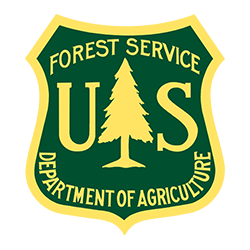
U.S. Forest Service
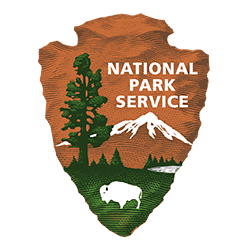
National Park Service
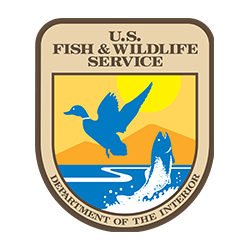
U.S. Fish & Wildlife Service

U.S. Fire Administration
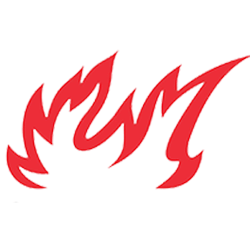
Canadian Interagency Forest Fire Centre
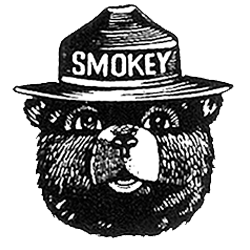
Smokey Bear
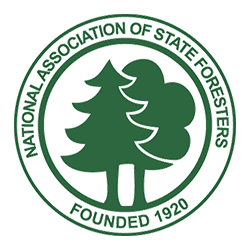
National Association of State Foresters
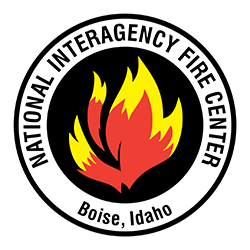
National Interagency Fire Center
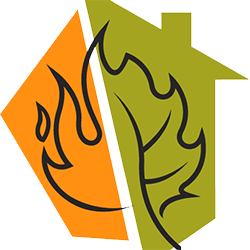
Firewise Communities

Federal Emergency Management Agency (FEMA)
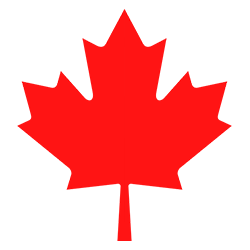
Natural Resources Canada
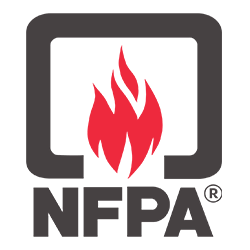
National Fire Protection Association

